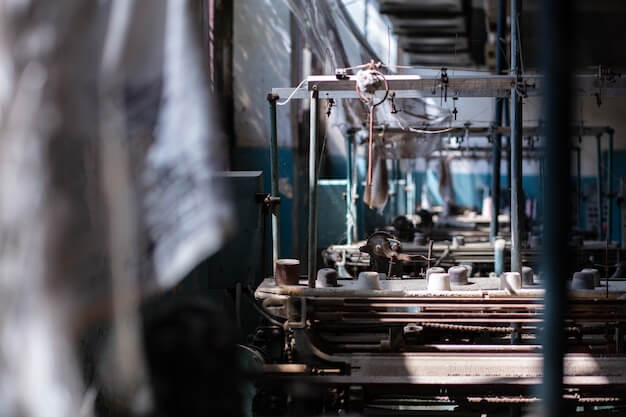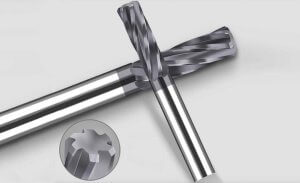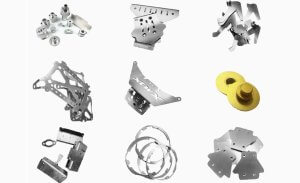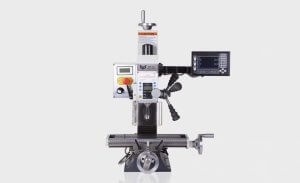Introduction to CNC Machining and Material Selection
CNC Machining, or Computer Numerical Control machining, is a manufacturing process where pre-programmed computer software dictates the movement of factory tools and machinery. This method can be employed for managing a variety of complex machinery from grinders and lathes to mills and routers. With CNC machining, three-dimensional cutting operations are achievable through a simple, single set of commands. A crucial aspect in this procedure lies in selecting the appropriate material. The choice between anodized and non-anodized aluminum, for instance, could significantly influence the final product’s quality and performance. Aluminum’s inherent characteristics like its lightweight nature, resistance to corrosion, and thermal conductibility make both forms extremely versatile in CNC machining.
- Anodized Aluminium: Undergoes an electrochemical process that creates a dense protective layer on its surface. This improves durability, resistance to weathering and aesthetics, but may also affect machinability.
- Non-Anodized Aluminium: Does not possess the supplementary protective layer seen in Anodized Aluminium but retains aluminums natural high machinability properties. This allows for easier manipulation within CNC processes, sometimes making it more desirable depending on the application.
Understanding Aluminum
Aluminum is a widely used material in manufacturing, particularly valued in CNC machining processes due to its unique characteristics. As a lightweight metal with excellent durability, conductivity and versatility, aluminum stands as an ideal candidate for varying applications. It possesses high thermal and electrical conductivity properties, contributing to its efficiency within electronics manufacturing. Aluminum also exhibits fantastic corrosion resistance owing to an oxide layer that forms naturally on contact with air.
- Durability: Despite being lightweight, aluminum can withstand substantial force making it useful for heavy-duty purposes.
- Conductivity: High thermal and electrical conductivity makes aluminum instrumental in building electronic components.
- Corrosion Resistance: A natural oxide layer enables the metal to resist damage from weather elements and chemicals.
A common example of this would be automobile manufacturing, where aluminum’s lightness aids in reducing vehicle weight while maintaining strength and resilience to wear-and-tear, thus enhancing fuel economy.
Introduction to Anodized and Non-Anodized Aluminum
Anodized aluminum is a variant of the metal that undergoes an electrochemical process, where the surface of the material forms a layer of oxide. This process enhances the natural oxidation resistance of aluminum, which significantly improves its durability and resistance to corrosion. On top of this added toughness, anodizing also allows for better adhesion for paint primers and glues, making it a preferred choice for many industrial applications within automotive, aerospace, and construction.
In contrast, non-anodized aluminum doesn’t undergo any additional processing after its initial production. It retains the original characteristics of the raw aluminum – it’s lightweight, ductile, conductive, and corrosion-resistant up to a point. However, without the protective oxidized layer furnished by anodization, non-anodized aluminum isn’t as durable or resistant to wear, especially in harsh environmental conditions. Let’s elucidate these two types further:
- Anodized Aluminum: Enhanced with extra protection through an electrolytic passivation process. This adds a layer of oxidization, increasing its strength, weather resistance, and ability for color dyes to bond to the aluminum surface.
- Non-Anodized Aluminum: Is used “as is” post-production. Lightweight, malleable, thermally and electrically conductive, but softer and less immune to elemental damage compared to its anodized counterpart.
Pros and Cons of Anodized Aluminum
When considering anodized aluminum for CNC machining, it’s important to weigh its advantages and disadvantages:
- Advantages of Anodized Aluminum:
- Increased durability and corrosion resistance
- Enhanced aesthetics with a variety of color options
- Improved chemical and mechanical resistance
- Disadvantages of Anodized Aluminum:
- May not be ideal for surfaces with critical dimension control
- Potential for creating a brittle final product
For professional CNC machining services, consider Precision Machining Service.
Pros and Cons of Non-Anodized Aluminum
The benefits of using non-anodized aluminum in CNC machining are myriad. First and foremost, it’s highly cost-effective; by opting for non-anodized aluminum, manufacturers can drastically reduce their production expenses. Additionally, its innate qualities – including impressive strength, remarkable heat conductivity, excellent corrosion resistance, and superior malleability – make it an ideal material for creating products with complex geometries, such as automotive parts or aerospace components.
However, choosing non-anodized aluminum isn’t without potential drawbacks. Generally speaking, objects made from this type of aluminum might be less durable than those created with the anodized option due to a lack of surface hardness. Making your product look prettier may also come at a higher price since additional preparation steps (like polishing) would probably be required before painting.
- Pros:
- Cost-effectiveness
- Strong heat conductivity
- Excellent corrosion resistance
- Suitable for complex geometries
- Cons:
- Possible lower durability
- Potential need for extra preparation before painting
Comparison between Anodized and Non-Anodized Aluminum
When comparing anodized aluminum to non-anodized, several factors come into play such as durability, cost, and appearance. As regards durability, the anodization process enhances corrosion resistance, making anodized aluminum sturdier in harsh environments, its protective oxide layer keeps it from wear and tear over time. On the other hand, non-anodized aluminum, without this extra protection has a slightly lower level of durability.
In terms of cost, non-anodized aluminium is typically less expensive due to no added processing costs. Appearance-wise, anodized aluminum offers more color options and tends to have a richer metallic sheen compared to non-anodized aluminum which has a duller finishing
The applicability of each form of aluminum depends largely on the specifics of the application or project. For indoor uses and applications requiring less toughness like decorative items, non-anodized aluminum may be suitable. However, for outdoor applications, heavy machinery parts, or scenarios where additional durability and increased resistance to wear is necessary, anodized aluminum often turns out to be a better choice.
Conclusion
In conclusion, the fundamental differences and similarities between anodized and non-anodized aluminum are key to consider when choosing either of them for CNC machining. Both materials possess unique characteristics making them suitable for different conditions and purposes. Anodized aluminum tends to offer better corrosion resistance, color options, and overall durability due to its protective oxide layer. Non-anodized aluminum, on the other hand, offers greater thermal conductivity and is less expensive, warranting its use in specific applications where these factors are critical.
Your decision should largely depend on the specific requirements of your project. For demanding environments requiring heightened protection against wear and corrosion, anodized aluminum would be a preferable choice. However, when cost-effectiveness and heat absorption are imperative, non-anodized aluminum could serve better.
Ultimately, technical principles dictate that an effective material selection strategy ensures optimal performance and life expectancy of a product, leading to tremendous long-term benefits in any production or manufacturing context.
Frequently Asked Questions about Anodized vs. Non-Anodized Aluminum in CNC Machining
In the realm of CNC machining, queries often arise about anodized and non-anodized aluminum. First and foremost, people ask “What is the key difference?”. Simply put, anodizing is a process that thickens the natural oxide layer on aluminum parts, enhancing their corrosion resistance, wear resistance, and allowing for better adhesion of paints and primers. On the contrary, non-anodized aluminum doesn’t go through this process, leaving it in its original state with its natural properties intact.
- Anodized aluminum or non-anodized?. Your choice between these should depend upon your project’s specific needs: raw aluminum offers more flexibility to be welded after machining but if you need enhanced durability or color customization, anodized variant would suit better.
- Does anodization affect dimensional precision? Indeed, it does as the process increases the material’s thickness by up to .05mm – .1mm, making it critical for projects demanding high precision.
- Is any variant less suitable for CNC machining? Both are well-suited, however, the dust created from machining anodized aluminum can be abrasive to equipment over time. Therefore, proper machine maintenance becomes even more paramount.
In sum, each type retains its unique advantages and potential shortcomings dependent on your particular situation. It’s crucial to evaluate which aligns better with your project specifics before proceeding.
Other Articles You Might Enjoy
- Innovative CNC Machining for Advanced Spacecraft Components
Introduction: CNC Machining and its role in Spacecraft Components Computer Numerical Control (CNC) machining has, over the years, proven to be one of the most integral pillars within manufacturing industries.…
- Ceramic Tooling in CNC Machining: Breaking the Myths About Durability and Performance?
CNC Machining and Ceramic Tooling: Busting the Myths Computer Numerical Control (CNC) machining is an advanced method of manufacturing where pre-programmed software controls the movement of factory machinery, giving intricate…
- CNC Machining Parts Factory: Specializing in High-Quality Steel
Introduction to CNC Machining and its Significance CNC (Computer Numerical Control) machining is a critical component in modern manufacturing, responsible for executing complex cuts and designs with absolute precision. This…








